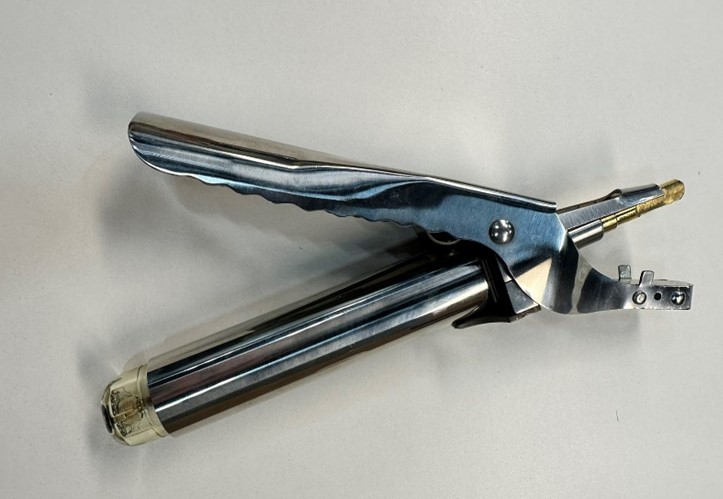Argentina: Cattle Herd Collapse Analyzed - When Political Drought Is Worse Than Climate

Last week, data on the country's cattle population was released , which, according to the Ministry of Agriculture, Livestock and Fisheries, amounted to 51.6 million heads at the end of 2024 .
Compared to the previous year, this is a decrease of 2.2%, equivalent to 1.16 million HEAD. Moreover, this is the lowest figure since 2011, since you have to go back to that year to see fewer cattle in Argentina’s fields.
Overall, the stagnation in cattle numbers over the past two years is often attributed to the severe drought that livestock farmers have experienced .
But beyond this variable, which undoubtedly played a significant role, the Rosario Livestock Market (ROSGAN) has refined its analysis to identify the structural causes holding back the expansion of the livestock herd, which has not yet recovered.
“When analyzing the dynamics of the livestock population over the cycles, a downward trend has been observed since almost 2018, when Argentina barely managed to recover 55 million heads after the initial sharp decline that ended in 2010,” the Rosario-based organization warned.
The people of Rosario felt that, in addition to climatic factors, there were other factors that should be taken into account in this process of stagnation and loss of livestock.
At this stage, after the sharp decline in livestock numbers caused by the 2008/09 drought, which resulted in the loss of about 10 million head, another variable has emerged.
“There was no specific programme of support for the sector at the national level to restore this stock,” they stressed.
They added that "on the contrary, this was followed by years of interventions and trade restrictions that seriously limited and slowed down output growth."
In response to this state intervention aimed at supporting domestic prices by cutting off foreign trade, Rosgan argued that the economic turmoil of recent years was not the best scenario for planning a recovery plan.
“In this context, the drought that has hit much of the country over the past two years has wreaked havoc on an already battered sector, hitting the very heart of the country’s livestock industry.”
Rosgan's report estimates that more than 850,000 cattle were lost in the provinces of Buenos Aires, La Pampa, Cordoba and Santa Fe last year alone, accounting for 75 percent of the national loss.
This figure is not insignificant, as these regions account for about 65% of the national cattle population and 70% of the total number of calves. Against this unfavorable outlook, a positive statistic is the slight improvement in the calf-to-cow ratio, which reached 65.2% last year, compared to 63.8% the year before.
“In addition to the number of calves achieved, there are still categories that still need to gain momentum,” they admitted.
The most illustrative case is the bull category, where the decline in numbers is already structural: from 4.7 million registered in 2007, their number has fallen to 2.2 million in 2023. According to Rosgan, this is the most pronounced decline in the last seven years.
"These data highlight the serious challenge the sector faces in terms of increasing MEAT production in the face of increasingly limited livestock numbers," they conclude.
Beyond bulls, the decline in heifers is a blow to the cattle herd, hitting a category essential to maintaining herd reproduction. Last year, the industry processed 4 million head out of a total herd of 7.3 million animals at the start of the cycle.
With these figures, the hatching rate was 54%, the situation was aggravated by the low level of calf reproduction and was reflected in the loss of heifer population by 475,000 heads.
Under this scenario, a final herd of 6.8 million head was achieved, “which is further and further away from the 8.2 million heifers counted in 2016,” Rosgan concluded.
Read together with it:
- Belstat reported how much grain, milk, meat, and vegetables are produced in Belarus per capita.November 14, MINSK . Belarus produces 913 kg of grain, 958 kg of MILK, 341 kg of potatoes, and 304 kg of vegetables per capita, according to a review by the National Statistical Committee for the Day of Agricultural and Processing Industry Workers, BELTA reports. The country also produces 78 kg of fruits and berries, 147 kg of livestock and poultry (slaughter weight), and 4......
- UniCredit заявил о галактических усилиях из-за санкций против РоссииUniCredit старается не нарушить «более 15 тыс. санкций», а также не «совершать ошибки», которые позволят изъять его активы в России, заявил гендиректор. После начала военной операции банк начал рассматривать возможность ухода Итальянский банк UniCredit прилагает «галактические усилия», пытаясь соблюсти международные санкции в отношении своего российского подразделения. Об этом заявил генеральный д...
- "Белорусские продукты - страновой бренд". В Гродно поздравили работников сельского хозяйства областиФото 13 ноября, Гродно. В Гродно торжественно поздравили с профессиональным праздником работников сельского хозяйства, передает корреспондент БЕЛТА.Этот праздник в нынешнем году для аграрной отрасли региона особенный - впервые в истории в области собрали более 2 млн т зерна с учетом кукурузы. Как отметил в беседе с журналистами председатель комитета по сельскому хозяйству и продовольствию облиспол...
- Низкое предложение и устойчивый спрос: в Аргентине растут цены на мясоЦены на говядину снова выросли, что отразилось на полках супермаркетов и в мясных магазинах. За последние две недели розничные цены выросли на 8–12%, а на некоторые популярные отрубы рост превысил 15% по сравнению с октябрем. Тем не менее, продажи остаются высокими: потребители продолжают покупать, принимая новые цены и закрепляя тенденцию, которая повторяется каждый год в конце года, когда спрос ...
- Лучшие не только по молоку. Какие рекорды поставили в экспериментальной базе имени КотовскогоНовости темы Экспериментальная база имени Котовского известна далеко за пределами Узденщины благодаря высоким показателям, которых из года в год добиваются в хозяйстве. Лучшие результаты в районе агропредприятие показывает как по молоку и зерновым, так и по сахарной свекле. Страда этого года, проходившая не в самых простых погодных условиях, также стала рекордной. Хлеб – всему голова Весна 2.........




























































